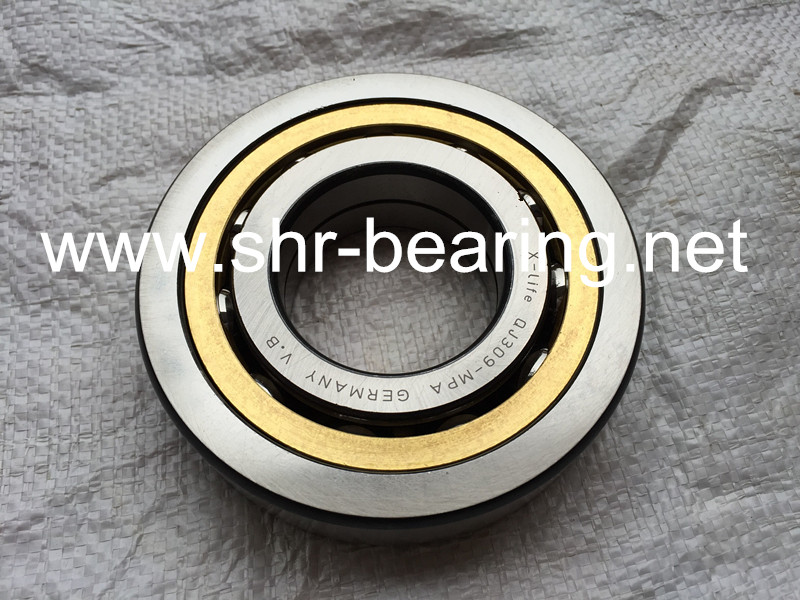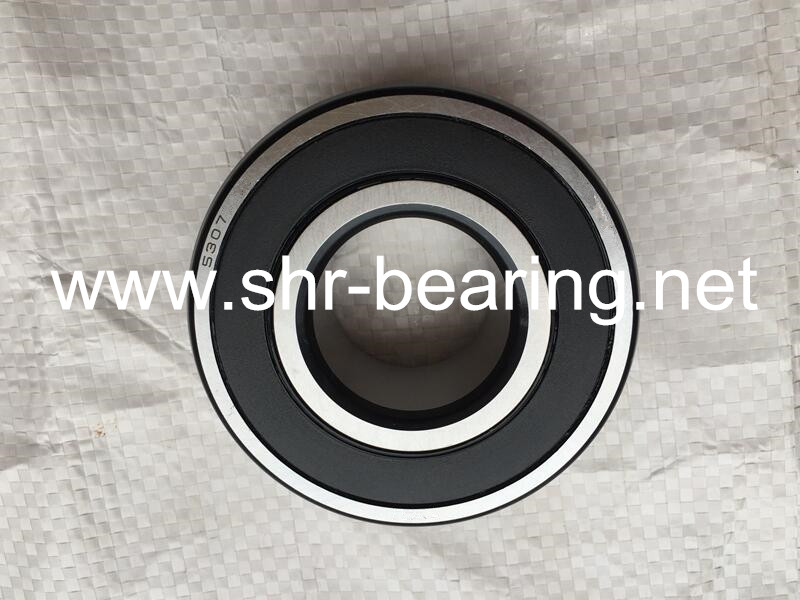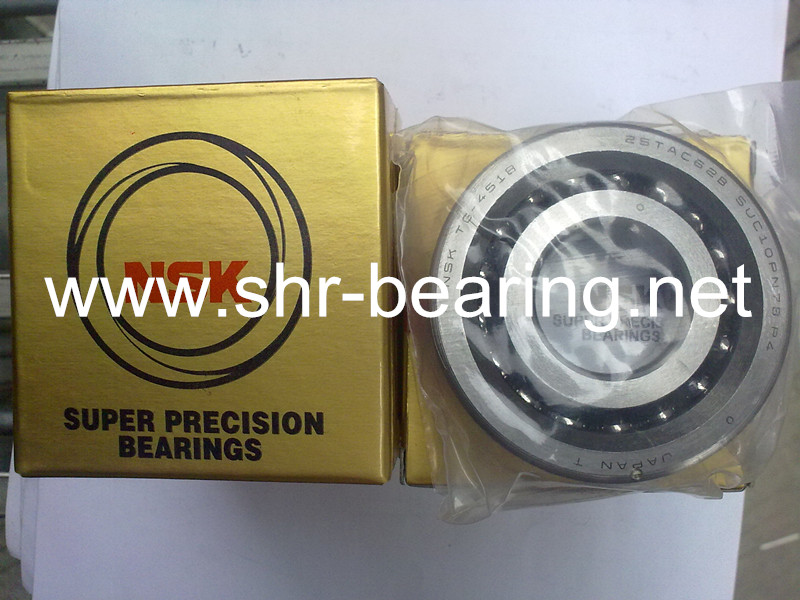Angular Contact Ball Bearings models
Feature
Total 1 Page 11 records

Features:
Angular contact ball bearings in a tandem arrangement are used when the actual thrust force exceeds the thrust load capacity of a single angular contact ball bearing , Single row angular contact ball bearings in tandem arrangement must always be adjusted against another bearing inversely arranged for shaft guidance in the opposite direction , angular contact ball bearings in spindle bearing design must not be exposed to any misalignments .Angular contact bearings better support "combined loads" (loading in both the radial and axial directions) and the contact angle of the bearing should be matched to the relative proportions of each. The larger the contact angle (typically in the range 10 to 45 degrees), the higher the axial load supported, but the lower the radial load. In high speed applications, such as turbines, jet engines, dentistry equipment, the centrifugal forces generated by the balls will change the contact angle at the inner and outer race.
Angular contact ball bearings suffix as below:
DB : Two bearings matched back-to-back
DF : Two bearings matched face-to-face
DT : Two bearings matched in tandem
C: 15° contact angle
B : 40° contact angle
M: brass cage
P: nylon cage
The main types of angular contact ball bearings:
■ Single row angular contact ball bearings
718 Series Angular Contact Bearings
719 Series Angular Contact Bearings
70 Series Angular Contact Bearings
B70 Series Angular Contact Bearings
72 Series Angular Contact Bearings
Precision series (Reference super precision bearings series )
■ Double row angular contact ball bearings
■ Four-point contact ball bearings
Parameter:
| Suffixes - Internal design | Stands for |
|---|---|
| A | 30° contact angle |
| AB | 20° contact angle (Inch bearing ) |
| AC | 25° contact angle |
| B | 40° contact angle |
| E | Optimized internal design |
| Suffixes - External design (seals, snap ring groove, execution etc.) | Stands for |
| N1 | One locating slot (notch) in one outer ring side face |
| CA | Bearing for universal matching. Two bearings arranged back-to-back or face-to-face have axial internal clearance smaller than Normal (CB). |
| CB | Bearing for universal matching. Two bearings arranged back-to-back or face-to-face have Normal axial internal clearance. |
| CC | Bearing for universal matching. Two bearings arranged back-to-back or face-to-face have axial internal clearance greater than Normal (CB). |
| G | Bearing for universal matching. Two bearings arranged back-to-back or face-to-face have axial internal clearance. |
| GA | Bearing for universal matching. Two bearings arranged back-to-back or face-to-face have light preload. |
| GB | Bearing for universal matching. Two bearings arranged back-to-back or face-to-face have moderate preload. |
| GZ | Bearing for universal matching. Two bearings arranged back-to-back or face-to-face have heavy preload. |
| Suffixes - Cage design | Stands For |
| F | Machined steel cage, ball centred |
| J | Stamped steel cage, ball centred |
| M | Machined brass cage, ball centred; different designs are identified by a number following the M, e.g. M2 |
| MB | Machined brass cage, inner ring centred |
| P | Glass fibre reinforced PA66 cage, ball centred |
| PH | Glass fibre reinforced PEEK cage, ball centred |
| Y | Stamped brass cage, ball centred |
| Suffixes - Accuracy, clearance, preload, quiet running | Stands For |
| P5 | Dimensional and running accuracy to P5 tolerance class |
| P6 | Dimensional and running accuracy to P6 tolerance class |
| Suffixes - Bearing sets, matched bearings | Stands For |
| DB | Two bearings matched for mounting back-to-back |
| DF | Two bearings matched for mounting face-to-face |
| DT | Two bearings matched for mounting in tandem |













